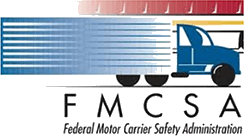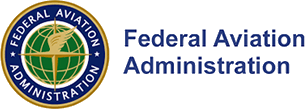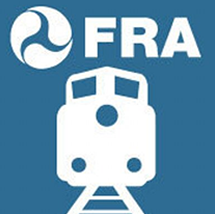Frequently Asked Questions
By far the greatest cost of substance misuse is in the form of lost productivity of individuals who are dependent on or who abuse drugs and alcohol. Productivity losses attributable to substance misuse cost an astronomical amount of money. The productivity impact of drug and alcohol misuse on the economy is so significant that the problem must be considered in the context of the impact it has on the long-term prospects for the economy.
No one person is immune to substance misuse whether by themselves or by people around them. Untreated addition costs New Hampshire’s economy $2.36 billion. 66% of that cost ($1.5 billion) is incurred by businesses in the form of impaired productivity and absenteeism. In 2012 New Hampshire economy lost $1.15 billion due to productivity lost as a result of substance abuse.
- An estimated 3.6 million Americans are dependent on drugs and 8.2 million are dependent on alcohol
- 74% of drug users are employed full-time
- 87% of drug users work for small companies (less than 500) of which only 5% of them are substance free workplaces
Substance misusers are:
- 10 times more likely to miss work
- 3.6 times more likely to have an accident
- File 5 times as many Worker’s Comp Claims
- Using 5 times more health benefits
- Report working for 3 or more employers per year
- Skipping 1 or more days of work per month
Visit SAMHSA – Substance Abuse and Mental Health Services Administration https://www.samhsa.gov for the most recent statistics and topics
All drivers who hold a Commercial Drivers License (CDL) and operate a Commercial Motor Vehicle (CMV) in the following circumstances are subject to drug and alcohol testing:
Operation of a vehicle with a gross vehicle weight rating (GVWR) of 26,001 pounds.
Operation of a vehicle with a gross combined weight rating of 26,001 or more pounds inclusive of a towed unit with a GVWR of 10,000 pounds.
Operation of a vehicle designed to transport 16 or more passengers including the driver.
Operation of a vehicle of any size used to transport materials found to be hazardous and which require a vehicle to be placarded under Hazardous Materials Regulation 49 CFR Part 172, subpart F.
Part 382.107
All drivers who operate a Commercial Motor Vehicle (CMV) used on a highway in interstate commerce*** to transport passengers or property when the vehicle:
Has a gross vehicle weight rating or gross combination weight rating, or gross vehicle weight or gross combination weight, of 10,001 lbs or more, whichever is greater.
Is designed or used to transport more than 8 passengers (including the driver) for compensation.
Is designed or used to transport more than 15 passengers, including the driver, and is not used to transport passengers for compensation.
Is used in transporting material found by the Secretary of Transportation to be hazardous under 49 U.S.C. 5103 and transported in a quantity requiring placarding under regulations prescribed by the Secretary under 49 CFR, subtitle B, chapter I, subchapter C.
Part 930.5
Definitions — Commercial Motor Vehicle
***Interstate Commerce means trade, traffic or transportation in the United States—
- Between a place in a State and place outside of such State (including a place outside of the United States);
- Between two places in a State through another State or a place outside of the United States; or
- Between two places in a State as part of trade, traffic or transportation originating or terminating outside the State or the United States.
New CDL holders are required to have the following training prior to using their CDL for their first time.
- Driver Qualification
- Hours of Service
- Driver Wellness
- Whistleblower Protection
No. However, DOT certified medical examiners are allowed to require it on a case per case basis.
Depending on the violation, a business may be fined a minimum of $500 up to $10,000. These fines are per violation. I.e., if a business had four drug tests required and failed to complete them, they may be fined up to $40,000.
Any violation pertaining to HAZMAT or vehicles with multi passengers has higher fines – averaging double.
The average fine for not completing required drug and alcohol testing is $5,000.
The average fine for not completing required drug and alcohol testing for HAZMAT vehicles is $10,000.
Motor Carriers may be fined for each time their driver leaves the business property without a current medical card.
**The information provided is based on research gathered by ODTNE between 2004-2017.
- Employers are not required to continue employment for drivers that test positive or refuse to test.
- If the driver is terminated, the employer must give the driver a list of resources including Substance Abuse professionals (SAP) and their contact information.
- If the employer continues employment, they must remove the driver from performing safety-sensitive duties until they have been evaluated, met the appropriate education and/or treatment requirements, been re-evaluated, released back to work duties and completed negative drug and/or alcohol tests required by a DOT qualified SAP.
- Upon completion of the SAP referral program, the employer must insure the driver meets the SAPs follow-up program requirements which has a minimum length of 1 year up to 5 years so long as the driver remains under their employment.
- It’s a luck of the draw.
- No, your boss is not singling you out because you’re the only employee that doesn’t use drugs.
- A scientifically valid method to select employees for testing is required.
- Unacceptable random selection practices include selecting numbers from a hat, rolling dice, throwing darts, picking cards, or selecting ping pong balls.
- Everyone in a DOT random selection must have an equal chance of being selected and tested in each selection period.
- The reality is that in a truly random selection process, a high probability exists that some employees will be selected several times while others may never be selected. Why? Because after each selection, the employee’s name is returned to the same pool, and he or she becomes just as likely as anyone else to be selected next time.
For CDL drivers operating a personal vehicle, most States have established a BAC level of .08% or greater as being deemed to be driving under the influence of alcohol. For CDL drivers operating a CMV, the FMCSA has established a BAC level of .04% or greater as being deemed to be driving under the influence of alcohol and subject to the disqualification sanctions in the Federal regulations.
It should be noted, employers are permitted to consider an alcohol test showing any blood alcohol content for employees with a CDL as a positive and are able to enforce their own consequences noted in their policy.
No. For more information including the DOT’s notice on medical marijuana, see https://www.fmcsa.dot.gov/faq/does-legalization-use-and-possession-marijuana-state-or-other-country-has-d






